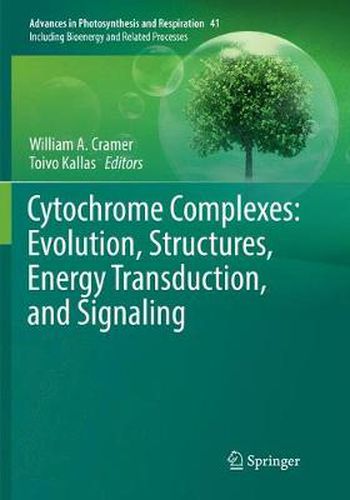Readings Newsletter
Become a Readings Member to make your shopping experience even easier.
Sign in or sign up for free!
You’re not far away from qualifying for FREE standard shipping within Australia
You’ve qualified for FREE standard shipping within Australia
The cart is loading…






An Introduction that describes the origin of cytochrome notation also connects to the history of the field, focusing on research in England in the pre-World War II era. The start of the modern era of studies on structure-function of cytochromes and energy-transducing membrane proteins was marked by the 1988 Nobel Prize in Chemistry, given to J. Deisenhofer, H. Michel, and R. Huber for determination of the crystal structure of the bacterial photosynthetic reaction center. An ab initio logic of presentation in the book discusses the evolution of cytochromes and hemes, followed by theoretical perspectives on electron transfer in proteins and specifically in cytochromes. There is an extensive description of the molecular structures of cytochromes and cytochrome complexes from eukaryotic and prokaryotic sources, bacterial, plant and animal. The presentation of atomic structure information has a major role in these discussions, and makes an important contribution to the broad field of membrane protein structure-function.
$9.00 standard shipping within Australia
FREE standard shipping within Australia for orders over $100.00
Express & International shipping calculated at checkout
An Introduction that describes the origin of cytochrome notation also connects to the history of the field, focusing on research in England in the pre-World War II era. The start of the modern era of studies on structure-function of cytochromes and energy-transducing membrane proteins was marked by the 1988 Nobel Prize in Chemistry, given to J. Deisenhofer, H. Michel, and R. Huber for determination of the crystal structure of the bacterial photosynthetic reaction center. An ab initio logic of presentation in the book discusses the evolution of cytochromes and hemes, followed by theoretical perspectives on electron transfer in proteins and specifically in cytochromes. There is an extensive description of the molecular structures of cytochromes and cytochrome complexes from eukaryotic and prokaryotic sources, bacterial, plant and animal. The presentation of atomic structure information has a major role in these discussions, and makes an important contribution to the broad field of membrane protein structure-function.